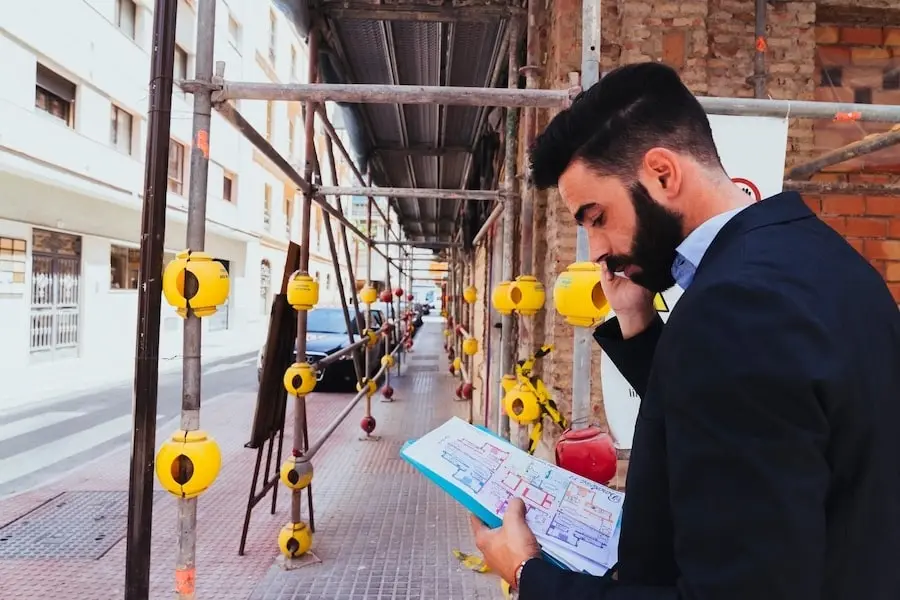Introduction
Construction projects are complex endeavors that require careful planning, coordination, and execution. Understanding the lifecycle of a construction project is crucial for anyone involved in the industry, from project managers and architects to contractors and clients. This blog will take you through the various stages of a construction project, highlighting the key activities and considerations at each phase.
1. Concept and Initiation
a. Idea Generation
Every construction project begins with an idea. This could be a vision for a new building, an infrastructure project, or a renovation. The initial concept is often driven by a need or opportunity identified by a client, developer, or community.
b. Feasibility Study
Before moving forward, it’s essential to assess the feasibility of the project. This involves conducting market research, financial analysis, and site investigations to determine if the project is viable. Key considerations include budget, location, regulatory requirements, and potential return on investment.
c. Project Charter
The project charter is a formal document that outlines the project’s objectives, scope, and stakeholders. It serves as a blueprint for the project and provides a reference point for all subsequent activities.
2. Planning and Design
a. Preliminary Design
Once the project is deemed feasible, the design phase begins. Architects and engineers collaborate to create preliminary designs and concepts. These initial drawings provide a visual representation of the project and help in refining the scope and budget.
b. Detailed Design
The detailed design phase involves developing comprehensive plans and specifications. This includes architectural, structural, mechanical, electrical, and plumbing designs. Detailed drawings and documents are created to guide the construction process.
c. Permits and Approvals
Obtaining the necessary permits and approvals is a critical step in the planning phase. This involves submitting designs to local authorities, ensuring compliance with building codes and regulations, and addressing any environmental or zoning concerns.
d. Project Planning
Effective project planning involves developing a detailed schedule, budget, and resource plan. This includes identifying key milestones, defining roles and responsibilities, and establishing a communication plan to ensure all stakeholders are aligned.
3. Procurement
a. Tendering and Bidding
The procurement phase involves selecting contractors and suppliers. This is typically done through a tendering and bidding process, where contractors submit proposals based on the project’s specifications and requirements.
b. Contract Negotiation
Once bids are received, the project team evaluates them and selects the most suitable contractors. Contract negotiation follows, where terms and conditions, pricing, timelines, and deliverables are agreed upon.
c. Supplier Engagement
In addition to hiring contractors, this phase includes engaging suppliers for materials and equipment. Ensuring the timely and cost-effective delivery of high-quality materials is crucial for the project’s success.
4. Construction
a. Site Preparation
Before construction can begin, the site must be prepared. This includes clearing the land, grading, excavating, and setting up temporary facilities such as offices and storage areas.
b. Foundation Work
Laying a solid foundation is the first major construction activity. This involves excavation, pouring concrete, and installing footings and slabs. The foundation provides the structural base for the entire project.
c. Structural Work
The next phase involves erecting the structural elements of the building, such as beams, columns, walls, and floors. This is followed by the installation of the roof and exterior finishes.
d. Mechanical, Electrical, and Plumbing (MEP) Work
MEP systems are installed during the construction phase. This includes HVAC (heating, ventilation, and air conditioning), electrical wiring, plumbing, and fire protection systems. Coordination between trades is essential to avoid conflicts and ensure proper integration.
e. Interior and Exterior Finishes
Once the structural and MEP work is complete, the focus shifts to interior and exterior finishes. This includes drywall, painting, flooring, cabinetry, and landscaping. Attention to detail during this phase is crucial to achieving the desired aesthetic and functional outcomes.
5. Commissioning and Handover
a. Testing and Inspection
Before the project is handed over to the client, thorough testing and inspection are conducted. This includes verifying that all systems are operational, performing safety checks, and ensuring compliance with design specifications and building codes.
b. Client Walkthrough
A client walkthrough is conducted to review the completed project. Any issues or deficiencies identified during the walkthrough are addressed and rectified before final handover.
c. Handover and Documentation
The final step involves handing over the project to the client. This includes providing all necessary documentation, such as as-built drawings, operation and maintenance manuals, and warranties.
6. Post-Construction
a. Occupancy and Use
After handover, the building or infrastructure is ready for occupancy and use. The client begins utilizing the space for its intended purpose, whether it’s a residential, commercial, or public facility.
b. Maintenance and Operations
Ongoing maintenance and operations are essential to ensure the longevity and functionality of the project. This involves regular inspections, repairs, and upkeep of the building’s systems and components.
c. Post-Project Review
A post-project review is conducted to evaluate the project’s overall success. This includes assessing whether the project met its objectives, stayed within budget, and was completed on time. Lessons learned are documented to improve future projects.
Conclusion
The lifecycle of a construction project is a complex journey from concept to completion. Each phase requires careful planning, coordination, and execution to ensure the project’s success. By understanding and effectively managing each stage, construction professionals can deliver projects that meet client expectations, adhere to budgets and timelines, and contribute to the built environment’s overall quality and sustainability.











